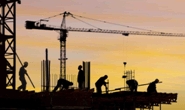Analysis

September 5, 2019
Construction Spending Stalls in July
Written by Sandy Williams
Construction spending was essentially flat in July, inching up less than 0.1 percent from June, according to an analysis of U.S. Census Bureau data by the Associated General Contractors of America. Spending slid 2.7 percent from a year ago to a total seasonally adjusted annual rate of $1.289 trillion. Year-to-date, spending declined by 2.1 percent from the January-July 2018 total. AGC noted “a weak single-family homebuilding market and declines in some private nonresidential segments masked gains in public and multifamily construction.”
“Overall spending totals have been fluctuating for more than two years, with divergent patterns for residential, private nonresidential and public construction,” said Ken Simonson, the association’s chief economist. “Although year-to-date construction spending in the first seven months of 2019 combined was less than in the same period last year, most nonresidential and multifamily contractors remain busy and optimistic about future work.”
Public construction spending increased 0.4 percent for the month and 5.6 percent year-to-date. Among the four largest public categories, spending in the first seven months of 2019 jumped 12.0 percent for highway and street construction, was unchanged for educational construction and climbed 9.8 percent for transportation (airports, transit, rail and port) projects compared with last year.
Private nonresidential spending declined 0.8 percent from June to July, but the seven-month total was 0.6 percent higher than in January-July 2018. Major private nonresidential categories experienced mixed year-to-date results. The largest, power construction (comprising electric power generation, transmission and distribution, plus oil and gas fields and pipelines), climbed 8.3 percent year-to-date.
Commercial (retail, warehouse and farm) construction tumbled 15.2 percent. Manufacturing construction posted a 4.7 percent gain. Private office construction spending rose 7.9 percent.
Private residential construction spending increased 0.6 percent for the month but slumped 8.5 percent year-to-date. Single-family homebuilding decreased 8.7 percent in the first seven months of the year, while spending on multifamily projects increased 6.6 percent. Spending on residential improvements plunged 12.7 percent year-to-date.
Finding enough qualified workers to meet demand continue to plague the construction industry. A recent survey by AGC found 91 percent of construction firms expected to hire hourly craft workers for expansion or replacement in the next 12 months, but 80 percent of the firms say they are having a hard time filling hourly craft positions. The drop in construction spending in some nonresidential categories in 2019 may indicate rejection or delay of projects by firms due to the labor shortage, said AGC.







